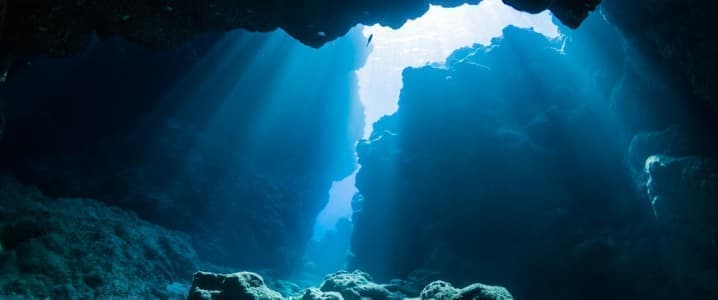The key metals necessary to advance the global energy transition will likely drive the next commodity supercycle. Soaring demand for lithium, copper, nickel, cobalt, and aluminum could lead to a battery metal supply crunch as early as this decade, while surging prices could reverse a decade of cost declines, analysts say. In a world increasingly focused on sustainability and ethically-sourced raw materials, some players in the metal mining industry believe that deep seabed mining operations in remote ocean areas could have a lower impact and lower costs than the land mining of key battery minerals—minerals associated with child labor in the Democratic Republic of Congo, for example, the world’s top producer of cobalt.
However, deep seabed mining is years away from commercial operations, at best, due to a lack of international regulations and concerns about the environmental impact of mineral extraction from the seabed in areas and ecosystems that are yet to be studied by marine biologists.
Some companies are betting on starting deep-sea mining in a couple of years. The Metals Company, for example, which just began trading on the NASDAQ, said last week it is working to “move the world’s largest estimated source of battery metals into production.”
“We believe we have a solution that is more scalable, secure, lower cost and lower impact than mining these minerals on land: We can produce battery metals from high-grade polymetallic nodules found on the seafloor in the international waters of the Clarion-Clipperton Zone,” Gerard Barron, Chairman and CEO of The Metals Company, said.
Related: Why Bank Of America Thinks Oil Prices Are Heading To $100 Polymetallic nodules contain four essential battery metals—cobalt, nickel, copper, and manganese—in a single ore, and they have been formed over millions of years by absorbing metals from seawater. Those nodules lie unattached to the seafloor, and The Metals Company plans to use a robotic collector to gently dislodge the metal-containing rocks from the seabed with minimal disturbance to the ocean floor.
TMC has exploration and commercial rights to three contract areas which host an estimated 1.6 billion tons (wet) of polymetallic nodules containing high-grade nickel, copper, cobalt, and manganese, in the Clarion Clipperton Zone of the Pacific Ocean—between Mexico and Hawaii—regulated by the International Seabed Authority.
The company says its studies have estimated that the polymetallic nodules within its exploration areas are enough to electrify a quarter of the world’s passenger vehicle fleet, or would be enough for around 280 million EVs.
TMC says its proposed method of retrieving battery metals generates much less carbon dioxide than conventional mining and is more environmentally friendly.
“It’s like picking up golf balls on a driving range,” CFO Craig Shesky told the IEEE Spectrum magazine edited by the Institute of Electrical and Electronics Engineers.
With access to funding and the listing on the NASDAQ, TMC expects to be able to complete pilot nodule collection trials in 2022, complete environmental impact studies by 2023, and file to move from exploration phase to exploitation phase in the third quarter of 2023, CEO Barron said in the statement last week.
Yet, TMC and other companies vying for deep-sea mining face strong opposition from environmental organizations that say disrupting the ocean would lead to losses of biodiversity and change the carbon cycle in the waters.
Moreover, the International Seabed Authority (ISA) has not yet agreed upon regulations on how to manage and supervise the exploration and extraction of minerals from the ocean floor.
The Clarion-Clipperton Zone (CCZ) is a “biodiversity hotspot,” Craig Smith, an oceanography professor at the University of Hawaii at Manoa, told IEEE.
Related: IEA Sees Robust Oil Demand In October
Smith has led research expeditions to the CCZ, which have found species new to science. It’s not possible to mine polymetallic nodules without causing ecological damage “over tens of thousands of kilometers,” the oceanography professor says.
“Deep-sea mining may irreparably harm ocean ecosystems before we even have a chance to fully study its impacts,” the Center for Biological Diversity says.
Even some potential customers of metals extracted from the ocean supported earlier this year a call for a moratorium on deep seabed mining.
Automakers BMW and Volvo, as well as Google and Samsung SDI, vowed not to buy metals produced from deep-sea mining until the environmental risks of the activity are “comprehensively understood.”
By Tsvetana Paraskova for Oilprice.com
More Top Reads From Oilprice.com:
- Two Ways To Play The 107% Rally In Natural Gas
- Soaring European Energy Prices Could Send The Commodity Boom Into Overdrive
- High Natural Gas Prices Today Will Send U.S. Production Soaring Next Year


















